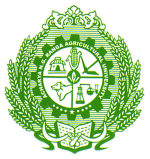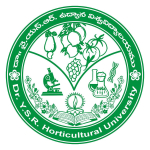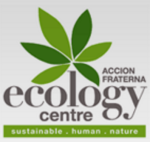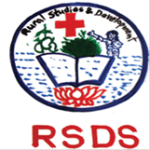CGIAR Research Program on Dryland Systems - DS
Leader Girish Chander, International Crops Research Institute for the Semi-Arid Tropics - ICRISAT
Team
members: 10
Partner
organizations: 8
Budget 2025
USD :
0
Activities/Products: 11
Description
The action sites for CRP Dryland Systems research activities in Andhra Pradesh, India are Bonthirala and Yerraguntla villages located in Kurnool district (Dhone mandal/cluster of villages), and Kurlapalli and Mallapuram villages located in Anantapur district (Kalyandurg mandal). The action site villages have 1091 households with a total population of 4764 (1985 in Kurnool district action sites; 2779 in Anantapur district action sites). Kurnool district as such has a population of 35,12,260 (17,87,470 male, 17,24,790 female), while Anantapur district has a population of 36,39,300 (18,59,500 male, 17,79,800 females). More than 75% of the people in each of the district depend on agriculture and allied activities for their livelihoods. Kurnool and Anantapur districts have tropical climate with temperatures ranging from 26 to 45 °C in summer and 12 to 31 °C in winter.
The average annual rainfall of Kurnool district is about 671 mm (varying from 500 mm to 900 mm across mandals). About 68 per cent of the annual rainfall is received during the South-West (Jun-Sep) monsoon period. The action site Dhone mandal receives about 544 mm of annual rainfall. The Erramalas mountain ranges in the district divide the district into two well defined tracts from East to West. The North Pagidyala mandal is about 305 m above sea level. From this height the ground slopes to the South until it traverses into the Pennar valley. Major part of its land tract is black (61%) soil followed by red (33%) soil. The net sown area of the district is 8,61,500 ha and major crops are cotton, paddy, pigeonpea, groundnut, sorghum, chickpea, sunflower, castor and maize. Most of the agricultural area in the district is rainfed and only about 21% is the gross irrigated area as % of gross cropped area. Kurnool district occupies 10th and 2nd place in terms of area in largest districts of India and Andhra Pradesh, respectively, accounting for 17,658 square kilometres. Kurnool district comprises 3 revenue divisions, 54 revenue mandals and 920 revenue villages.
The average annual rainfall of Anantapur district is about 553 mm (varying from 340 mm to 700 mm across mandals). About 61 per cent of the annual rainfall is received during the South-West monsoon period. Anantapur district is the driest district of Andhra Pradesh with great spatial variation in rainfall in Anantapur district. The target site Kalyandurg mandal receives about 544 mm of annual rainfall. October is the wettest month with a rainfall of about 134 mm followed by 102 mm in September. The northern and central portions of Anantapur are a high plateau, generally undulating, with large granite rocks or low hill ranges rising occasionally above its surface. In the southern portion of the district the surface is more hilly, the plateau there rising to 610 m above the sea. The soil types are predominantly red (78%) followed by black (20%). The economy of the district is principally agrarian and prominent crops include groundnut, pigeonpea, pearl millet, castor, paddy, chickpea, chillies. The net sown area of the district is 9,23,000 ha. Most of the agricultural area in the district is rainfed and only 16.9% is the gross irrigated area as % of gross cropped area. In 2006 the Indian government named Anantapur one of the country's 250 most backward districts (out of a total of 640). Anantapur is the largest district of Andhra Pradesh spanning an area of 19,130 square kilometres. It is the largest district in terms of area in Andhra Pradesh and 7th largest district in India, respectively. The district has been divided into three revenue divisions consisting of 63 revenue mandals (Anantapur division 20, Dharmavaram division 17 and Penukonda division 26).
Atlas
Activities/Products
Projects
| Acronym | Project Title | Year | Section | Leader | Center | Budget | Start Date | End Date | View |
|---|
Outcomes and Impact
| Code | Outcomes and Impact | Type | Indicators | View | |
|---|---|---|---|---|---|
| 13 | Operational efficency increased and drudgery reduced especially for women | research outcome | 1 | ||
| 1 | Crop yields increased | research outcome | 2 | ||
| 2 | Female and male farmers/stakeholders (inc.youth) awareness, skills and knowledge increased | research outcome | 11 | ||
| 3 | Water use efficiency and Water Productivity increased | research outcome | 1 | ||
| 4 | Fodder productivity increased | research outcome | 1 | ||
| 5 | Food and Nutrition security status increased (e.g. availability, consumption) | research outcome | 0 | ||
| 6 | HHs income increased | research outcome | 0 | ||
| 7 | Female and male Farmers (inc.youth) maintain and increase indigenous crops/tree species | research outcome | 1 | ||
| 8 | Local community participation in co-design and co-implement village-based approaches increased | research outcome | 1 | ||
| 9 | Mono-cropping decreased | development outcome | 0 | ||
| 10 | Tools, methods, processes and capacity of stakeholders to create/customize resilience options improved | research outcome | 3 | ||
| 11 | Female and male farmers/shakeholders use/adopt/implement methods/tools/approaches/technologies/NRMpractices/Varieties/framework/concepts | development outcome | 2 | ||
| 12 | Rules and regulations developed/implemented at community level | research outcome | 1 |
Personnel Involved
Partners













